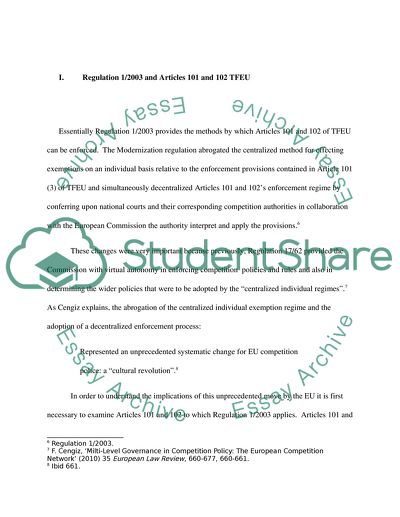Cite this document
(The Modernization of Article 101 and 102 TFEU Essay, n.d.)
The Modernization of Article 101 and 102 TFEU Essay. Retrieved from https://studentshare.org/macro-microeconomics/1746750-critically-asses-the-modernizationof-article-101-and-102-tfeu-and-merger-policy-over-the-last-ten-years
The Modernization of Article 101 and 102 TFEU Essay. Retrieved from https://studentshare.org/macro-microeconomics/1746750-critically-asses-the-modernizationof-article-101-and-102-tfeu-and-merger-policy-over-the-last-ten-years
(The Modernization of Article 101 and 102 TFEU Essay)
The Modernization of Article 101 and 102 TFEU Essay. https://studentshare.org/macro-microeconomics/1746750-critically-asses-the-modernizationof-article-101-and-102-tfeu-and-merger-policy-over-the-last-ten-years.
The Modernization of Article 101 and 102 TFEU Essay. https://studentshare.org/macro-microeconomics/1746750-critically-asses-the-modernizationof-article-101-and-102-tfeu-and-merger-policy-over-the-last-ten-years.
“The Modernization of Article 101 and 102 TFEU Essay”, n.d. https://studentshare.org/macro-microeconomics/1746750-critically-asses-the-modernizationof-article-101-and-102-tfeu-and-merger-policy-over-the-last-ten-years.


